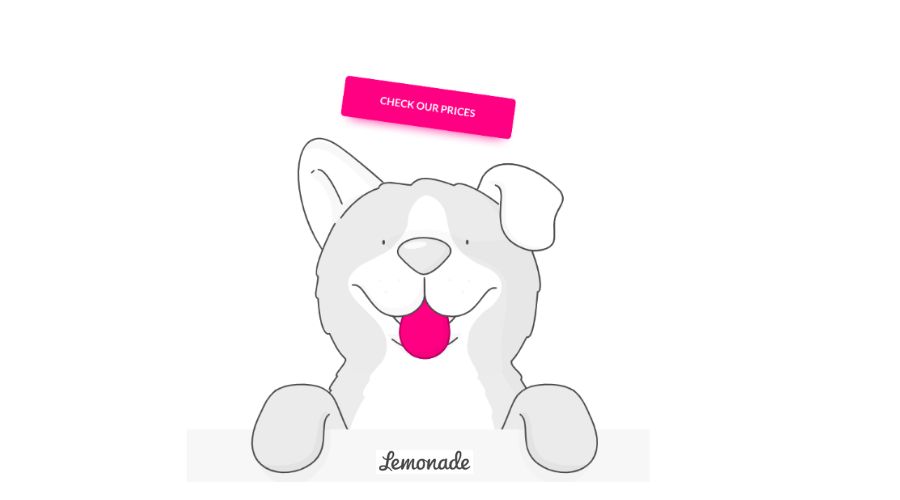Pet insurance enables pet owners to give their animals affordable medical treatment. A pet insurance plan pays for a portion of your pet’s medical expenses in return for a fee. Your needs will determine the best kind of strategy for you.
Plans for pet insurance are available that cover illness, care and emergency care, wellness, and preventive care. On the other hand, wellness policies are typically either stand-alone plans or supplements to accident-only or accident and illness plans, which are typically less expensive.
Numerous pet insurance providers are available. Find out who your veterinarian recommends. Ask if you will have to pay the bill and wait for reimbursement, or if they will accept payments straight from the insurance company.
There is sometimes a waiting period between buying a policy and the start of coverage with many insurance companies. These time frames can be anywhere from a week to thirty days.
Types of Pet Insurance and What They Cover
When searching for pet insurance, it’s crucial to consider a variety of possibilities because pet insurance plans might differ greatly in what they cover.
Examine every aspect of the policy you are thinking about purchasing to ensure you understand it, and compare each pet insurance plan to others.
Typical forms of pet insurance consist of:
Accident and Illness Coverage (A&I)
The most popular kind of pet insurance coverage is this one. These plans partially include:
- Unexpected operations
- Imaging tests, including X-rays and abdominal ultrasounds
- Being admitted to the hospital
- Therapy for respiratory, gastrointestinal, urinary tract, and other infections
- Treatment for cancer
- Emergency medical attention
Accident-Only (AO)
Accident-only plans are more reasonably priced from certain insurance providers. Unexpected procedures for fractured bones or gastrointestinal obstructions are partially covered by these insurance.
Wellness Plans
Regular medical treatment and preventive medication are covered by pet wellness plans. Dental cleanings and issues are typically not covered by pet wellness policies.
Spaying and neutering may be covered by many wellness plans, but there may be restrictions on the age of your pet and the time the procedure is done.
Additionally, wellness programs allow you to see your veterinarian more frequently for preventative care without worrying about the expense.
Dental Insurance
A dental insurance plan can help you maintain your pet’s regular dental care as well as assist you with unforeseen, expensive dental complications.
Extra Coverages to Look For
When looking for pet insurance, the following other forms of therapy should be taken into account:
- Behavioral therapy, such as reactive or compulsive therapy
- Instruction
- Treatment for rehabilitation
- Alternative treatments (such as chiropractic, acupuncture, and laser therapy)
- Chronic disease prescription diets
- Supplements, such as those suggested for the management of chronic illnesses
- Costs associated with dying, such as burial, cremation, and/or gentle euthanasia
What Does Pet Insurance Not Cover?
The policy you select will determine this. Pre-existing conditions, dental coverage, and genetic concerns are typically not covered by most insurance.
Many won’t include a condition that is “expected.” The insurance company might refuse treatment if the opposite knee becomes problematic after the coverage was acquired, for instance, if your dog requires knee surgery prior to the policy being obtained.
It might be necessary for breeders to search for policies that address reproductive issues. It’s crucial to consider what you think your pet could require in the future and make sure those circumstances are addressed.
What Is a Pet Insurance Deductible?
The amount that must be spent at the vet before the coverage will assist with payment is known as the pet insurance deductible.
The insurance company will examine your additional expenses and pay a portion of the permitted fees once you have paid the deductible specified in your policy.
What Is a Pet Insurance Claim and How Do They Work?

You submit a claim to the insurance company to get reimbursement for the costs you incurred at the veterinarian.
You file a claim via the insurance company’s website or app, or by filling out forms. The information you need to complete the paperwork will be provided by many veterinary offices. A thorough invoice or proof from your veterinarian proving payment for the treatment must be uploaded. Upon approval of the claim, you will receive a fund transfer, check, or direct deposit.
If you have a pre-existing condition, your medical documents are unclear or incomplete, or you haven’t made your monthly payments, your claim may be rejected.
It’s crucial to remember that the business may have a predetermined reimbursement rate, which could range from roughly 70% to 90% of the initial invoice that they will settle. As an alternative, you might be able to select your rate from a range.
When selecting an insurance plan, one should also take into account reimbursement caps, which are limitations on the amount of money the insurer will pay for specific conditions. It is possible to implement reimbursement caps for expensive chronic illness care, treatment, and testing. This covers immune-mediated illnesses, diabetes, and cancer.
If their pet reaches the reimbursement maximum, some pet parents will pay more for treatment than the monthly premium.
Fortunately, the majority of pet insurance providers have switched to a structure that reimburses 80% to 90% of the remaining balance after deducting the deductible amount from the invoice total.
Conclusion
Your search for the best pet insurance ends here with Lemonade. Get a hassle-free digital experience and lightning-fast claims payment. Powered by AI. They are carefully crafted in collaboration with the vet team and lots of excited pet parents. The insurance with Lemonade covers diagnostics (this includes blood tests, urinalysis, x-rays, MRIs, labwork, CT scans, and ultrasounds), procedures (outpatient, specialty, and emergency care; hospitalization; and surgery), and medications. You will also get huge savings on vaccinations, tests, and essential care. It is a package of preventative care created exclusively for your fur family’s younger members. Important procedures, including microchipping, flea medication, spaying or neutering, and up to six vaccinations or boosters, are covered.

FAQs
How does insurance for pets operate?
Lemonade Pet Insurance protects you against unforeseen veterinary expenses if your pet has a new injury or sickness. Additionally, Lemonade Pet provides several preventative packages and add-ons, allowing you to tailor your insurance to the requirements of your pet.
Waiting periods: what are they?
We have waiting periods before some coverages start, same as all pet insurers: two days for accidents, fourteen days for sickness, and six months for cruciate ligament occurrences. However, if you choose our preventative package, you can start using its benefits the day after you bought the policy!
How can I bring in a second pet?
Each pet requires a different policy, which you will have to set up one at a time. To acquire a fresh quotation for your other dog or cat after buying a pet insurance policy for your first pet, simply click the plus sign on the home screen of the Lemonade app. Additionally, a 5% multi-pet discount is available.
Do you require the medical records of my pet?
In order to provide your pet the greatest experience, we want to get to know them. We will request your pet’s medical records when you buy your insurance coverage. These records contain important information and let us know if your pet has any pre-existing conditions, or past health problems. Additionally, this will expedite the claim evaluation process!
How do claims for pet insurance operate?
Lemonade Pet operates on the principle of reimbursement. After paying the veterinarian’s bill in full, you can use the Lemonade app to submit a claim right away. Taking into consideration your deductible and co-insurance, we will immediately credit your bank account with the refund if it is accepted.





